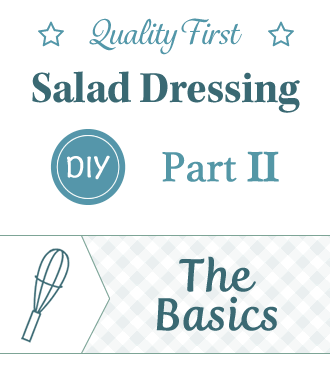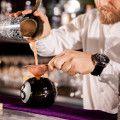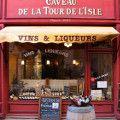Salad Dressings DIY Quality: Part II The Basics
With spring arriving soon it is time to re-visit the DIY concept of making your OWN salad dressings and eliminating all store bought dressings.
In last year post “SALAD DRESSINGS DIY Part I: French Dressing” we explored together the history of French Dressing and the early development of bottled dressings sold in stores.
Although ‘French Dressing’ was never made by the French, as usual it is fair game to blame the French for inventing mayonnaise, which was the first step towards bottled dressings sold conveniently in stores. These early bottled dressings were delicious, full of excellent ingredients, and convenient.
This is [Part 2] of the salad dressing series: [Part 1]➞ French Dressing, [Part 3]➞ Caesar Salad, [Part 4]➞ Spanish Paprika Dressing.
Today most bottled dressings are just a waste of money, with the cheapest ingredients possible used to maximize profit and heavy marketing to sell a poor product. Loaded with sugar and cheap fats to bribe consumer taste buds, many actually have water as the first ingredient.
A few bottled salad dressings have actually crossed the line and are bad for your health! A few, maybe less than a tenth of a percent of all salad dressing sold, is made with wholesome ingredients. If you see one of those, look around to spot the unicorn … they are that rare.
A high-quality bottled salad dressing is about as rare as the unicorn, which is why DIY salad dressings are the only way to go.
If consumers knew the extent that corporations have adulterated bottled salad dressing, the industry would probably collapse, but part of the money saved by using substitute ingredients is pumped into marketing to convince the consumer that all is well.
DIY <=== “Do It Yourself” for salad dressing will save you money and improve your health. On a regular basis I talk to people that are hooked on a wide assortment of bottled dressings, consuming sugar they do not need, colouring agents they do not need, and increasingly now, flavour essences to cover the ghastly taste that is the result of using cheap, marginal ingredients.
Starting 1 – 2 – 3
Here is the mantra: One tablespoon vinegar to three tablespoons of Oil = 1 – 2 – 3 (1 to 3). This is the basic building block of a DIY Dressing.
Some people will use more vinegar or less for taste but in a world without signposts … this is the classic start. You will have a favourite like I do.
Now that you have the ratio for DIY dressings, we can start.
Where to start?
Good Oil and natural vinegar is a great place to start. Notice that I said “Good Oil and Natural Vinegar” and not “Oil and Vinegar”.
Step 1, Oil:
This is because most mass market oil is just barely acceptable and bought on price. Usually blended from oils stored in stainless steel tanks shipped in from who knows where. Olive oil that was unsold in a season is sold cheaper. Poorly stored oil that has oxidized is cheaper. I think you can follow what I am saying here.
Mass market oil of any kind is usually bought with profit in mind, not the quality of the oil.
The news is full of olive oil scandals and mass market oil is usually, by definition, of abysmally poor quality. The good news is there is a LOT of great oil out there and it is easy to find.
So the first step is switch to an estate olive oil from an identified plantation that you can find on a map. They are reasonable in price but you do have to track one down. The ones Qualifirst sells come out about $11 per liter and go up into the premium category. The $11 per liter is EVOO (Extra Virgin Olive Oil) from a real single plantation and tastes fantastic.
Consumption of olive oil in the U.S.A. is about 1 liter per person per year. Canada is about 1.5 liters per person per year. Greece is the leader with an amazing 24+ liters per person per year followed by the Spanish (15) and the Italians (13). Here is a little map to put production and consumption in perspective

Step 2, Vinegar:
Let’s look at the vinegars now … Some vinegars are made from a petroleum distillate (!!)
For vinegar the news is pretty bad too. This FDA report on the use of synthetic alcohol in foods states the problem pretty clearly:
Presently, we authorize the manufacture of vinegar from ethyl alcohol synthesized from natural gas or petroleum derivatives. It is our opinion that most of the distilled spirits used in the production of vinegar are derived from natural gas and petroleum.
The second step is to source a wine-based or apple-based vinegar to get your “Natural Vinegar”. Again this is not hard to find and they have always been cheap, about $5 per liter.
Yearly Cost of DIY Dressing compared to Bottled:
So let’s do some arithmetic. Let us all assume that you belong to that club that consumes a salad every second night, and you make it with 3 tablespoons of an estate olive oil and 1 tablespoon of a cool red wine vinegar to make your DIY dressing. One tablespoon = 15 milliliters (ml for short) so …
A salad every second night is 365 / 2 = 183 salads.
Each salad has (3 tablespoons x 15 ml / tablespoons) = 45 milliliters of oil
- Each salad has (1 tablespoon x 15 ml / tablespoon) = 15 milliliters of vinegar
- Your total salad dressing Oil consumption in a year is 183 x 45 ml = 8,235 ml = about eight and a quarter liters or at $11 / liter under $100.
- Your total salad dressing Vinegar consumption in a year is 183 x 15 ml = 2,745 ml = about two and three-quarters of a liter or at $7 / liter under $20.
- Your total DIY Basic Salad Dressing cost in a year is 8, 235 ml + 2,745 ml = 10.98 Liters or under $120.
The average bottled salad dressing is $4.99 for 250 ml. This is not an unreasonable price.
$4.99 / 250 ml x (10,980 ml) = $249.97 or basically 10.98 Liters for about $250.
| DIY Salad Dressing | Bottled Salad Dressing |
| $120 | $250 |
Are you mad yet? Reaching for that pitchfork and torch?
There are cheaper salad dressing and they are hideous, but even if you find $2.99 bottled dressings you are still saving money with DIY.
I apologize for plunging your souls into the fires of math but very clearly, not only are bottled salad dressings made with poor ingredients, they are expensive as heck.
Normally you would want to spend MORE for a healthy change but in DIY-Salad-Dressing-Land, you spend less to get healthier.
Here is the tough question: “Since using better olive oil makes you healthier, does it make sense to use an olive oil that is $20 per liter?”
I can answer with a question: “Would you spend an extra $100 in a year for better health?”
Easy answer. Better Olive Oil is loaded with antioxidants.
Don’t take our word for it, try it for yourself and taste the difference: Castelanotti Olive Oil and Viniteau Vinegar.
Everyone has a favourite DIY Salad Dressing
Now that you have thrown all of your store-bought bottles of dressing out, recycled the glass, gotten a great olive oil, and sourced a natural vinegar, let us talk about favourite dressings to launch your DIY Salad Dressing at home. It has to be easy to make. You can do this in a blender or put the ingredients in a jar and shake it up.
Yes it is that easy.







